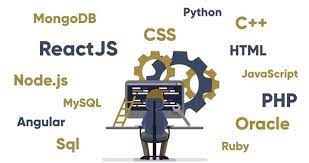This is the first part of the series that aims to explain the Introduction to Full Stack Web Development. Full Stack Web Development refers to the practice of developing both the front-end (client-side) and back-end (server-side) portions of a web application. A “full stack” developer is someone who has expertise in both areas and is capable of handling all aspects of web development, from designing user interfaces to managing databases and server-side logic.

Let us breakdown the components of Full Stack Web Development:
Table of Contents
What are Front-end Languages?
HTML/CSS: These are the fundamental building blocks of web pages. HTML (Hypertext Markup Language) is used for structuring content, while CSS (Cascading Style Sheets) is used for styling and layout. You can also use the Bootstrap CSS Library for optimizing the CSS part of the website.
JavaScript: This programming language is essential for adding interactivity and dynamic behavior to web pages. It runs in the browser and allows developers to create responsive user interfaces.
What are Back-end Languages?
Server-side programming languages: These include languages like Python, Ruby, PHP, Java, and JavaScript (Node.js). They are used to handle the logic and functionality on the server, process requests from the client, and interact with databases.
Databases: Full stack developers often work with databases like MySQL, PostgreSQL, MongoDB, or others to store and retrieve data for the application.
Server and Hosting
Server: Full stack developers need to understand how to set up and configure web servers. Popular choices include Apache, Nginx, or serverless options like AWS Lambda.
Hosting: Deployment of applications requires knowledge of hosting services like AWS, Heroku, DigitalOcean, or similar platforms.
Version Control and Full Stack Web Development
Version control systems: Full stack developers commonly use Git for tracking changes in the codebase. Platforms like GitHub, GitLab, or Bitbucket are often used for collaborative development and code hosting.
Web Development Frameworks and Libraries
Front-end frameworks: Such as React, Angular, or Vue.js for building robust and efficient user interfaces.
Back-end frameworks: Examples include Express.js for Node.js, Django for Python, Ruby on Rails for Ruby, Laravel for PHP, etc. These frameworks provide a structured way to build and organize code on the server side.
APIs (Application Programming Interfaces)
Full stack developers often work with APIs to facilitate communication between different software components. This can involve creating APIs for their own applications or integrating with third-party APIs.
Development and Debugging Tools
Familiarity with development tools like Visual Studio Code, debugging tools, and browser developer tools is crucial for efficient coding and troubleshooting.
By having expertise in both front-end and back-end technologies, full stack developers can work on all aspects of a web application, ensuring seamless communication between the client and server components. This versatility is valuable in smaller development teams or startups where individuals are expected to wear multiple hats. This is all about the Introduction to Full Stack Web Development, follow the next lesson.